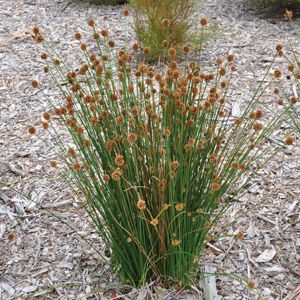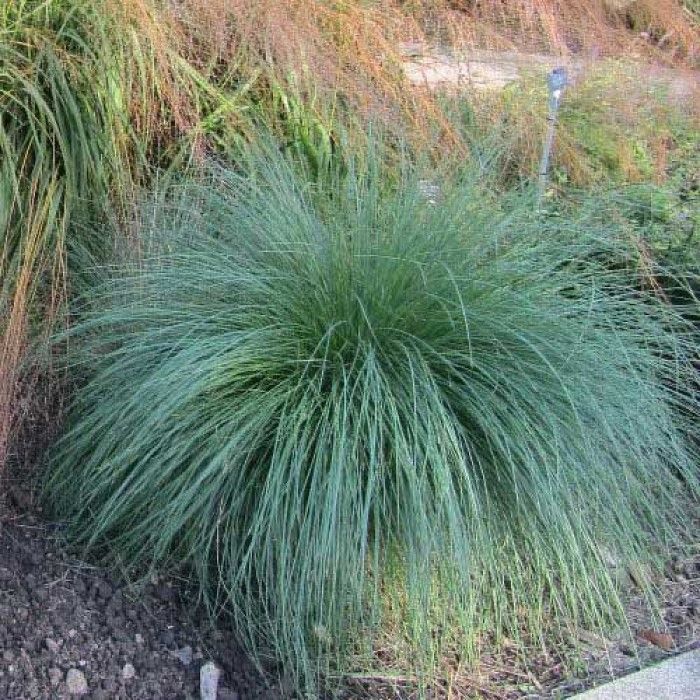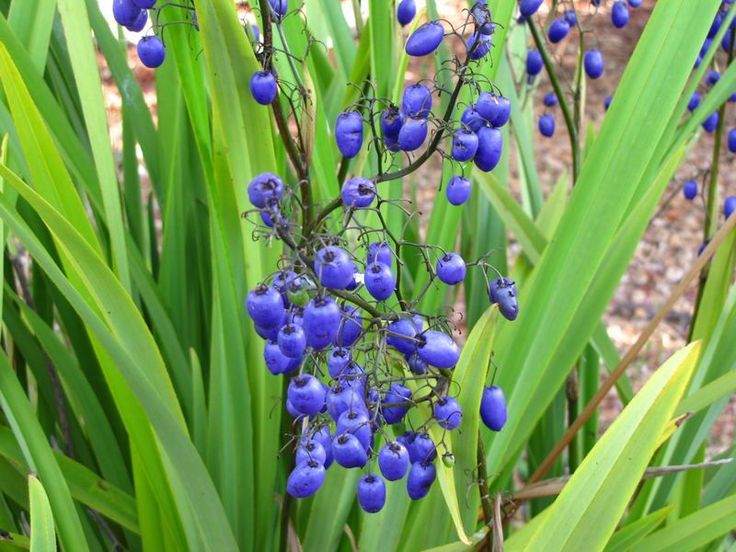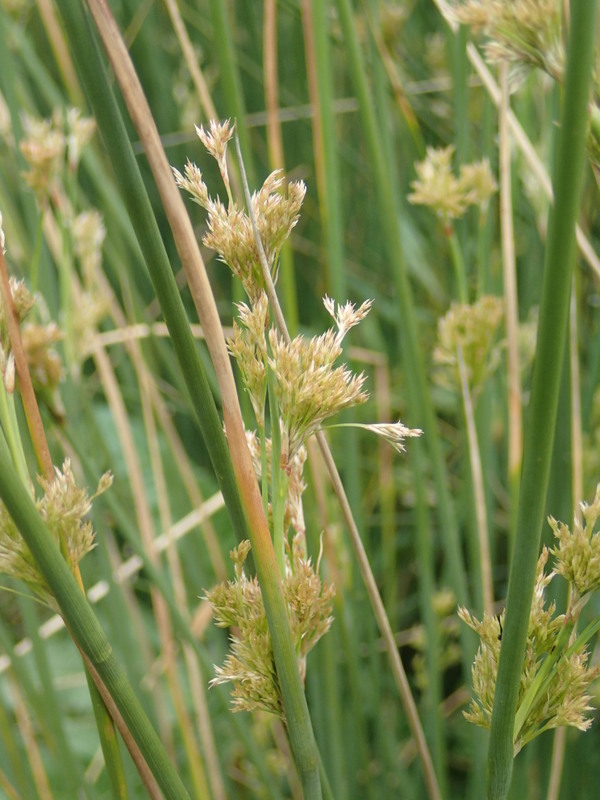Austrodanthonia caespitosa
Common Wallaby Grass

Description: Perennial grass about 0.8m high with clumping habit, spreading to 0.2m. Leaves fine and flat or rolled. Flowers in summer. Light green or pale seed heads. Individual plants may grow for up to six years. Slow growing.
Cultivation: Prefers sun or part shade. Tolerates most soil types. Hardy. Frost and drought tolerant.
Other:
- May be used as an alternative to lawn. Can be mown and will grow from seed after autumn rains.
- Attracts seed eating birds.
- Also known as White Top.
Ficinia nodosa
Knobby Club-rush

Description: Small hardy perennial sedge growing to around 1m tall and 2m across with characteristic knobby seed heads. Fast growing. Narrow dark green cylindrical leaves with sharp tips.
Cultivation: Prefers full sun or part shade. Damp to dry soil. Useful for boggy areas, but also tolerates extended dry periods. Great for difficult areas like slopes. Can be divided when mature to form new plants. Drought and frost tolerant.
Aboriginal Uses: Basket weaving.
Other:
- A reliable, sculptural plant.
- Attracts butterflies and seed eating birds.
Themeda triandra
Kangaroo Grass

Description: Iconic and distinctive tall grass with clumping tussocky habit. Grows to 1.5m tall and spreading to 1m with long drooping green leaves that turn brown and purple with maturity. Distinct red-brown spikelets appearing in summer.
Cultivation: Prefers full sun or part shade. Will grow in most soils. Drought and frost tolerant.
Aboriginal Uses: seeds were ground into flour, baked and eaten.
Other:
- Attracts seed-eating birds.
Poa poiformis
Coastal Tussock Grass

Description: A fast growing tussock forming perennial grass that has a height and spread of up to 1 metre. Features dense evergreen foliage with a weeping growth habit and distinctive blue/green hues. Produces graceful arching flower plumes.
Cultivation: This grass is adaptable to a variety of climate conditions and soil types. Requires minimal watering and can tolerate moderate frost and prefers good drainage in home gardens.
Other:
- Bird and butterfly attracting
- Provides safe haven for wildlife, particularlylizards.
- Stabilises sandy soils and can combat soil erosion.
Dianella revoluta
Black Anther Flax Lily

Description: Smaller than other species of Dianella, this clumping perennial sedge grows to 0.3 of a metre and spreads up to 0.5 of a metre wide. Features long, strappy leaves of blue green, with blue star-like flowers appearing in spring and summer and purple berries of around 10mm in diameter.
Cultivation: Propagation is relatively simple from dried seed grown in Spring and once established, is a hardy, fast growing plant. Plants can also be dug up, divided by the rhizome and transplanted. Prefers well drained soils.
Aboriginal Uses: Dianella leaves have been found on ancient Indigenous sites wound into cords. While not all species are edible (and some may be harmful), some have been used to make a medicinal tea.
Other:
- Attracts birds and insects
- Very hardy and variable
- Can assist in erosion control
Juncus pallidus
Pale Rush

Description: A perennial, clumping rush that can reach to a height of 2 metres and spread up to 1 metre. Features pale green to straw-coloured flowers arranged in spikes in Autumn and Summer and seeds shedding between December and April.
Cultivation: Prefers low lying and moisture retentive sites.
Aboriginal Uses: Indigenous peoples used the fibre from this rush to make fishing line and for weaving textiles and baskets.
Other:
- A valuable plant for bird and wildlife habitat
- Drought and frost tolerant
- Good for stablising estuary banks
- Suitable for use in raingardens and biofiltration systems
